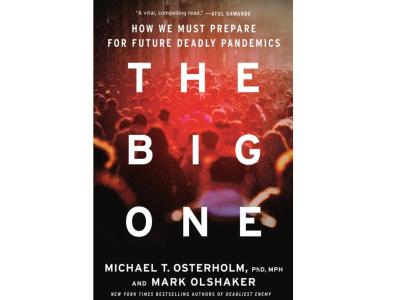UK study shows kidney injury in 26% of COVID-19 patients, mortality risk
A PLOS Medicine study late last week found double the incidence of acute kidney injury (AKI) in hospitalized COVID-19 patients and a threefold higher mortality than in COVID-19–negative patients. Men, nonwhite patients, and those with comorbidities were at increased risk of developing AKI with COVID-19.
The retrospective cohort study examined the relationship between COVID-19 and AKI in 1,161 SARS-CoV-2–positive patients admitted to two acute care hospitals in Derby, United Kingdom, from Mar 5 to Mar 12. Clinical outcomes were tracked through May 13, including AKI, in-hospital mortality, mechanical ventilation, intensive care unit admission, and length of stay.
The authors found that COVID-19 patients developed AKI at more than double the rate of patients who tested negative for COVID-19 (26.2% vs 12.4%). Older (aged 65 to 84) patients, men, those of nonwhite ethnicity, and those with comorbidities such as cerebrovascular disease, diabetes, and chronic lung and kidney disease were at an increased risk of developing AKI with COVID-19.
The researchers found significantly higher mortality higher in COVID-19 patients with AKI than in COVID-19–negative patients (60.5% vs 27.4%, P < 0.001), and AKI was an independent predictor of a threefold higher risk of death (odds ratio [OR], 3.27, 95% confidence interval [CI], 2.39 to 4.48). Patients with COVID-19 and AKI had a nearly fourfold higher risk of death than patients with AKI due to other causes (OR, 3.80, 95% CI, 2.62 to 5.51).
AKI in hospitalized COVID-19 patients appears to develop later than non-COVID-19 AKI, and may be due to direct effects of SARS-CoV-2 kidney damage or inflammatory effects of high cytokine levels (cytokine storm), the authors suggest, although the mechanism of kidney injury remains unclear.
"The practical implication of this observation is that patients with COVID-19 who do not have AKI on admission should have daily monitoring to detect [hospital-acquired] AKI," the authors suggest.
Oct 30 PLOS Med study
Global study finds consistent COVID death rates in all but elderly
A multi-country modeling study in Nature today confirms that the age-dependent risk of COVID-19 death is consistent for people below the age of 65, but the relative risk in older individuals varies considerably between nations.
Differences in rates of nursing-home outbreaks and variable reporting of deaths in elderly populations make cross-country comparisons of infection and fatality patterns difficult to quantify. The study authors developed a model using age-specific COVID-19 death data from 45 countries and 22 seroprevalence studies that measured the blood serum level of SARS-CoV-2, the virus that causes COVID-19, in a population to estimate epidemic size and patterns.
The estimated infection-fatality ratio (IFR, or the ratio of deaths per infection) for all countries was lowest among those 5 to 9 years of age, with a predictable mean increase in IFR of 0.59% (95% credible interval [CrI], 0.51% to 0.68%) with each 5-year increase in age for ages 10 years and older, and a risk of death significantly higher for men, particular those 80 and older (10.8% IFR vs 5.8% for women).
The authors estimate a total average 5.3% population rate of infection by Sep 1 (95% CrI, 4.5% to 6.2%) ranging from 0.06% in South Korea to 62.4% in Peru, and demonstrating high variability in the level of transmission across countries.
The model shows promise in identifying countries with lower-than-expected COVID-19 deaths among those older than 65, finding 220 fewer reported deaths in Ecuadorans older than 65 (per 100,000), consistent with under-reporting of COVID-19 deaths amongst elderly individuals (95% CrI, 200 to 240). The model was also able to identify areas where excess transmission in nursing home populations had likely occurred, showing a 22.3% IFR (95% CrI, 19.1% to 25.7%) in French nursing home residents, and highlighting the high COVID-19 burden of these communities in many higher-income countries.
"The results and modelling framework we present demonstrate how age-specific death data can be used to robustly reconstruct the underlying level of transmission," the authors write, "and may be of particular use in settings where there do not exist the resources to carry out large, representative seroprevalence studies."
Nov 2 Nature study











